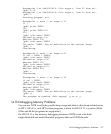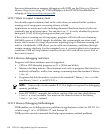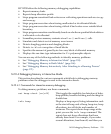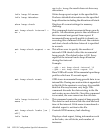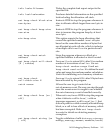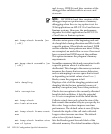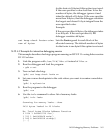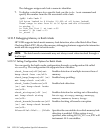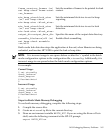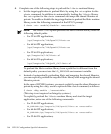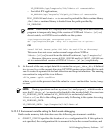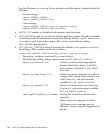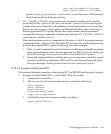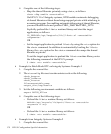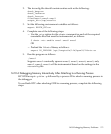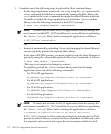
frame_count=no_frames (or)
set heap-check frame-count
<no_frames>
Sets the number of frames to be printed for leak
context.
min_heap_size=block_size
(or) set heap-check
min-heap-size <block_size>
Sets the minimum block size to use for heap
reporting.
min_leak_size=block_size
(or) set heap-check
min-leak-size <block_size>
Sets the minimum block size to use for leak
detection.
output_dir=output_data_dir
Specifies the name of the output data directory.
scramble_blocks=on|off (or)
set heap-check scramble
<on/off>
Enables block scrambling.
Batch mode leak detection stops the application at the end, when libraries are being
unloaded, and invokes HP WDB to print the leak or heap data.
NOTE: It is incorrect usage to use spaces before or after the '=' symbol in the batch
mode configuration options in the configuration file, rtcconfig. Additionally, it is
incorrect usage to use spaces before the batch mode configuration options.
For example:
Correct Usage:
$ cat rtcconfig
check_leaks=on
check_heap=on
files=batchrtc4
$
Incorrect Usage:
$ cat rtcconfig
check_leaks=on
check_heap = on
files=batchrtc4
$
Steps for Batch Mode Memory Debugging
To use batch memory debugging, complete the following steps:
1. Compile the source files.
2. Create an rtcconfig file in the current directory.
3. Dene an environment variable BATCH_RTC. If you are using the Korn or Posix
shell, enter the following command at the HP-UX prompt:
export BATCH_RTC=on
14.10 Debugging Memory Problems 165



